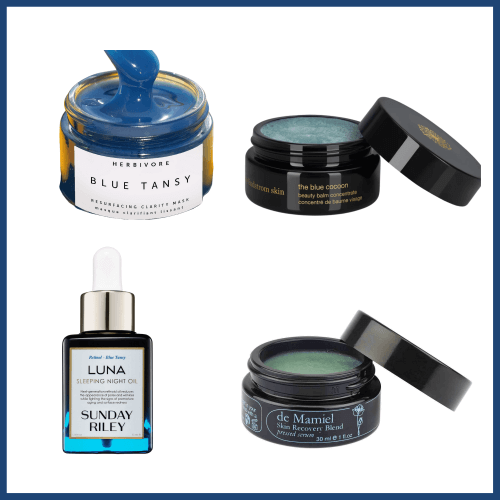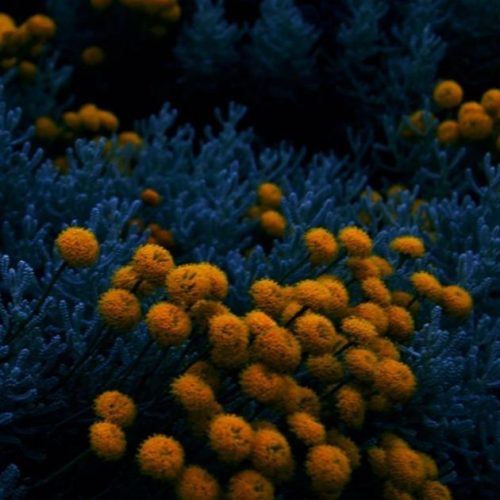As part of my education (i.e., the actual qualification) that I am undertaking, I come across lots and lots of new and wonderful ingredients, but very few of them are in fact, blue.
I really like blue as a colour (and please don’t write in and tell me that what I perceive as blue is anything but the colour blue).
Blue Tansy (Tanacetum annuum) is usually found as an essential oil in many products. You have inadvertently seen it somewhere….
Examples of products containing Blue tansy…

From Left to Right:
Lindstorm solid oil facial concentrate (US$ 180 for 50ml)
de mamiel The Skin Recovery Blend (£95 for 30ml)
CEO’s Luna Sleeping Night Oil (US$ 105 for 35ml)
…and its one of the most expensive essential oils
What are its benefits?
There are no studies focussed on blue tansy oil – that happens when an ingredient is cripplingly expensive to rule out experimenting in the lab.
However, we do know its chemical composition and from what I can gather, the primary reason for its inclusion is that it contains the compound Chamazulene and Camphor.
Roman Chamomile (blue) also contains Chamazulene but in much smaller amounts (less than 5%) Blue Tansy contains about 17%-40%, which is about 3x – 8x times as much.
Chamazulene is a soothing ingredient: essentially an anti-inflammatory compound that reduces redness and irritation. Camphor is antibacterial and relieves skin irritation.
According to Lindstorm, “applied topically, blue tansy oil works magic to clear rashes and allergic reactions, psoriasis, rosacea, and all forms of acne.”
Its smell is supposed to be floral and herbaceous, but its, “more potent and woody with a slightly acrid scent similar to eucalyptus.”
Blue tansy is an ally in your fight against troubled complexions…
Sources and uses: The Essential Oil Safety book by Tisserand
